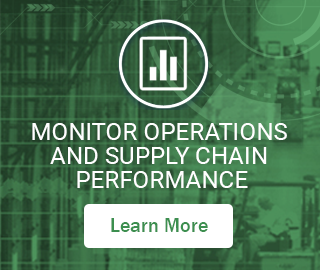Companies launch initiatives to upgrade or improve their sales & operations planning and demand planning processes all the time. Many of these initiatives fail to deliver the results they should. Has your forecasting function fallen short of expectations? Do you struggle with “best practices” that seem incapable of producing accurate results?
For ten years, the editorial team at Foresight: The International Journal of Applied Forecasting has been telling readers about the struggles and successes of forecasting professionals and doing all we can to educate them about methods and practices that really work. We do that with articles contributed by forecasting professionals as well as respected academics and authors of highly-regarded books.
As Founding Editor of Foresight, I’d like to invite you to join us for the upcoming Foresight Practitioner Conference entitled “Worst Practices in Forecasting: Today’s Mistakes to Tomorrow’s Breakthroughs.”
This 1.5-day event will take place in Raleigh, North Carolina, October 5-6. There we will take a hard look at common practices that may be inhibiting efforts to build better forecasts. Our invited speakers will share how they and others have uncovered and eliminated bad habits and worst practices in their organizations for dramatic improvements in forecasting performance.
Some of the topics to be addressed include:
• Use and Abuse of Judgmental Overrides
• Avoiding Dangers in Sales Force Input to Forecasts
• Improper Practices in Inventory Optimization
• Pitfalls in Forecast Accuracy Measurement
• Worst Practices in S&OP and Demand Planning
• Worst Practices in Forecasting Software Implementation
Foresight is published by the non-profit International Institute of Forecasters (IIF), an unbiased, non-commercial organization, dedicated to the generation, distribution and use of knowledge on forecasting in a wide range of fields. (Smart Software’s own Tom Willemain serves on Foresight’s Advisory Board.) Foresight is just one of the resources made available by the IIF. Additional publications, a host of online resources, an annual symposium and periodic workshops and conferences are available to all IIF members. The Smart Forecaster previously interviewed IIF past-president Dr. Mohsen Hamoudia. Visit the IIF site for information about joining.
(Len Tashman is the editor of Foresight: The International Journal of Applied Forecasting. The unusual practice-related conference he describes, upcoming in October 2016, will appeal to many of readers of The Smart Forecaster. For instance, those who have received Smart Software’s training have been alerted to the possibility that overriding statistical forecasts can backfire if done cavalierly. Two sessions at the conference focus on the use of judgement in the forecasting process. — Tom Willemain)
Related Posts

Mastering Automatic Forecasting for Time Series Data
In this blog, we will explore the automatic forecasting for time series demand projections. There are multiple methods to predict future demand for an item, and this becomes complex when dealing with thousands of items, each requiring a different forecasting technique due to their unique demand patterns.

Forecast-Based Inventory Management for Better Planning
Forecast-based inventory management, or MRP (Material Requirements Planning) logic, is a forward-planning method that helps businesses meet demand without overstocking or understocking. By anticipating demand and adjusting inventory levels, it maintains a balance between meeting customer needs and minimizing excess inventory costs. This approach optimizes operations, reduces waste, and enhances customer satisfaction.

Future-Proofing Utilities: Advanced Analytics for Supply Chain Optimization
Utilities in the electrical, natural gas, urban water, and telecommunications fields are all asset-intensive and reliant on physical infrastructure that must be properly maintained, updated, and upgraded over time. Maximizing asset uptime and the reliability of physical infrastructure demands effective inventory management, spare parts forecasting, and supplier management. A utility that executes these processes effectively will outperform its peers, provide better returns for its investors and higher service levels for its customers, while reducing its environmental impact.















